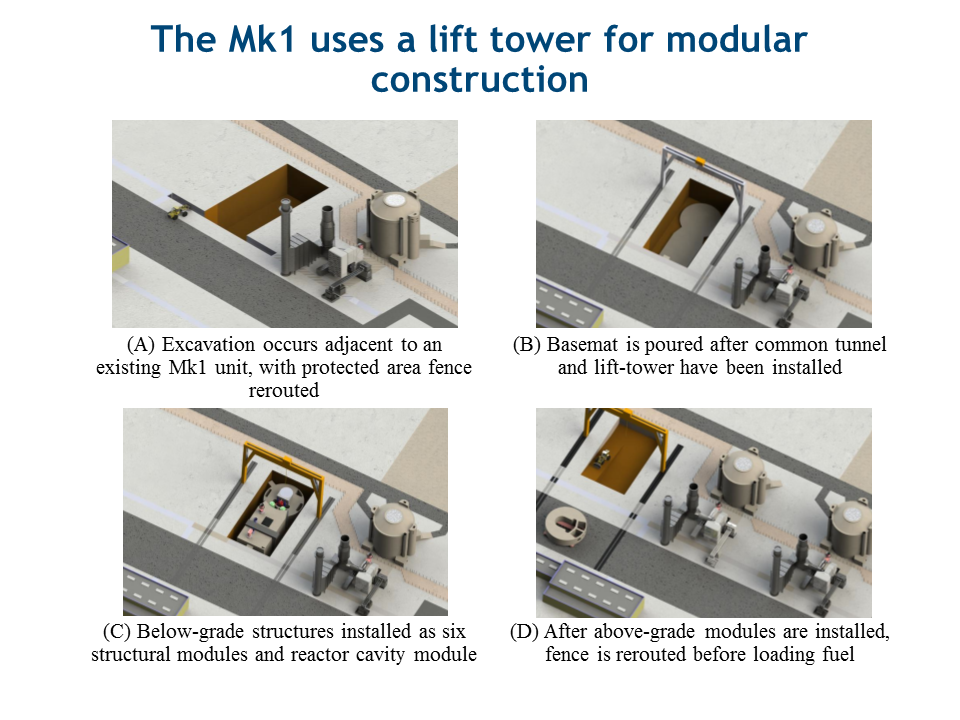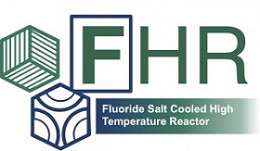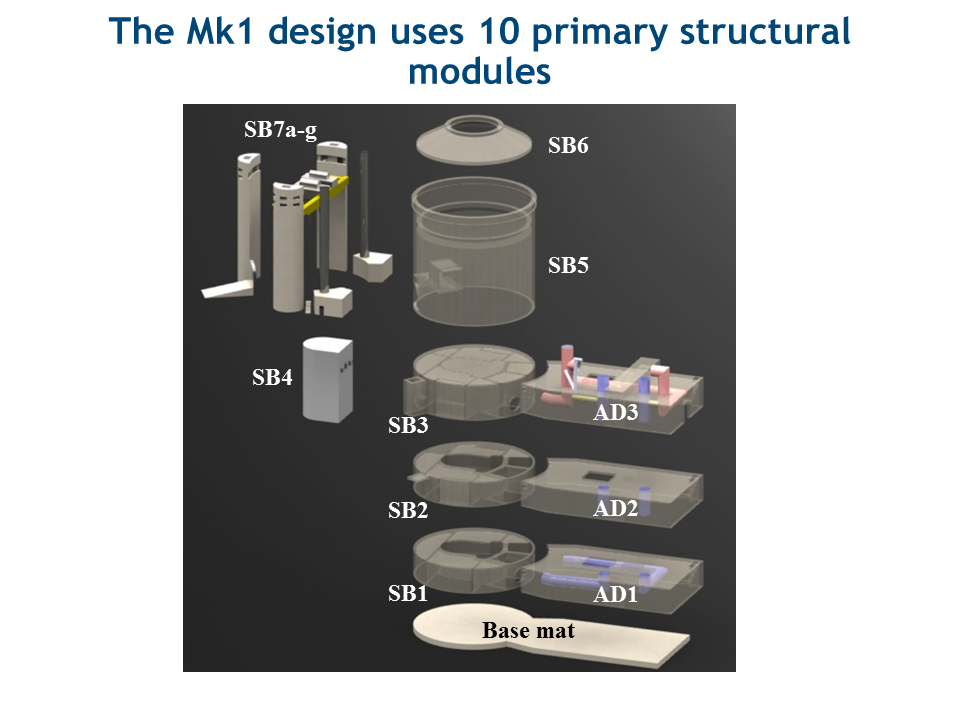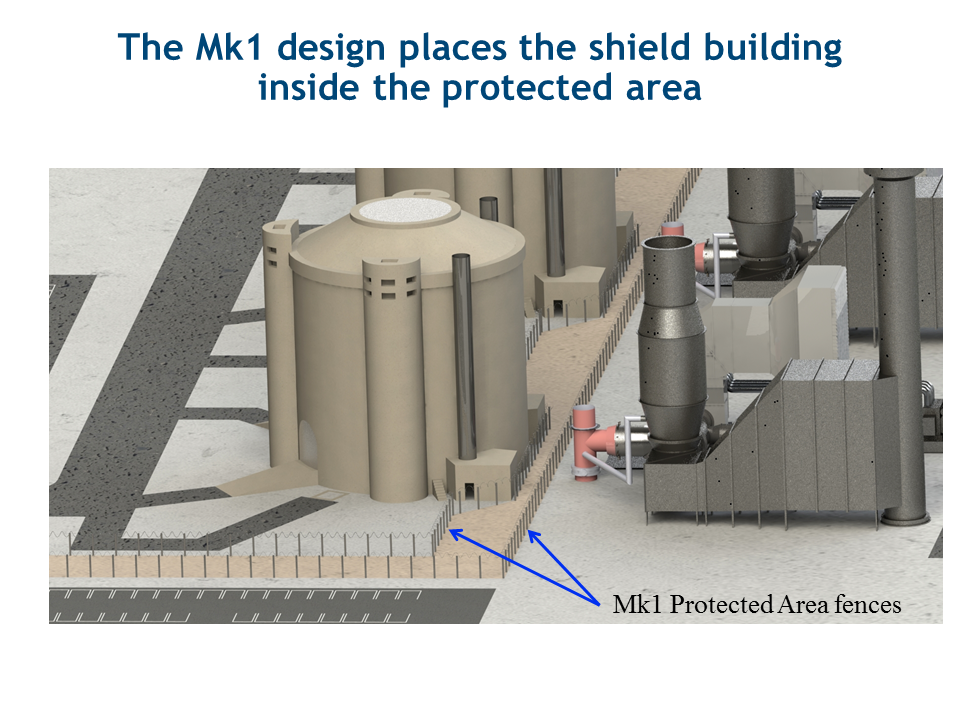The Mk1 PB-FHR is designed so that all components—including the reactor vessel, gas turbine, and building structural sub-modules—can be transported by rail, enabling modular construction. FHRs can be designed to implement passive safety even at gigawatt power levels; however it is a pragmatic choice for the Mk1 design to select a lower power level for the first commercial FHRs, comparable to the typical light-water small modular reactors (LWR-SMRs) now under development.
The relatively small power output of the modular Mk1 PB-FHR, and the requirement to design to facilitate construction of new units adjacent to operating units, alters construction compared to that for large LWRs. The 2014 UCB NE170 senior design class developed a detailed design for the Mk1 reactor building including modularizing the building and developing a “storyboard” to illustrate its assembly [13]. The figure below, from the senior design class, provides an exploded view of the 10 steel-plate /concrete composite (SC) structural modules designed to build a Mk1 PB-FHR unit.

Modular construction of a Mk1 unit uses a lift tower, with construction occurring outside the protected area (with a double fence system that runs between shield buildings and power conversion systems), adjacent to an existing unit [18]. A 12-unit Mk1 site would have the capability to produce 1200 MW of base load electricity, and up to 2900 MW using natural gas co-firing during periods when peak electricity is needed.



